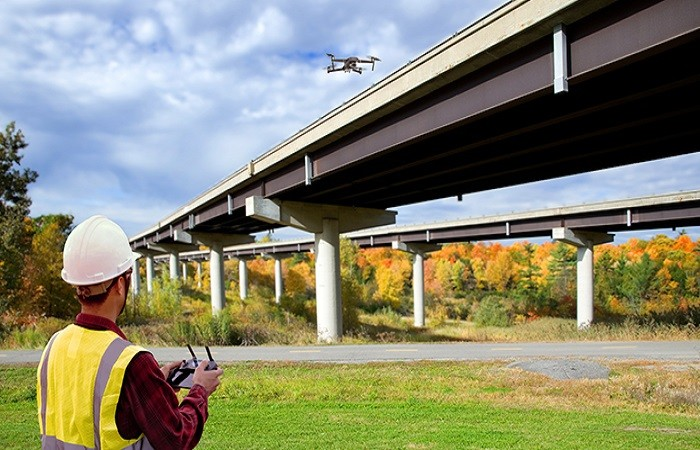
On September 9, Phong Chau Bridge in Phu Tho province suddenly crumbled into the Red River, causing 10 vehicles on the bridge to fall into the water, with 13 people missing.
Replying to the criticism about the lack of regular maintenance, which was believed to be the reason behind the collapse, road management agencies said the bridge regularly underwent maintenance and there were no concerns about safety at the time of the collapse.
However, experts believe that more needs to be done to prevent risks. There must be solutions to give early warnings about problems with transport infrastructure to discover lurking risks at transport works.
For bridge projects, high-reliability monitoring is extremely important. In addition to strictly controlling the construction process and detecting damage and lower quality in a timely manner, bridge monitoring provides quantitative data that can be used for researching and improving construction methods and design.
Monitoring data can also be used to assess the level of damage and deterioration, the capacity of the structure, and the ability to respond to incidents or abnormal structural events. This data can be used to produce maintenance and repair plans, thus ensuring the normal operation of bridges.
Monitoring activities for large bridges are carried out in many countries. In Vietnam, monitoring systems are designed and installed at many large bridges, including Nhat Tan, Nguyen Van Troi – Tran Thi Ly Bridges, Can Tho, Cao Lanh, and Nhat Le 2 Bridges, as well as the Nga Ba Que cable-stayed bridge - traffic intersection.
Large bridges, including cable-stayed bridges, suspension bridges and arched bridges, are considered semi-permanent thanks to their durability.
However, as time passes, the structural capacity gradually declines due to weathering, rust, cracking, deterioration of connecting components, fatigue and deformation. In storms, floods, and accidents, the bridge structure can be challenged in severe conditions.
However, a monitoring system can operate under all conditions and collect data about structural behavior and support the accurate assessment of the actual working capacity of the structure.
An automatic monitoring system that can simultaneously monitor multiple parameters and operate continuously over time can collect and accumulate important data. Thanks to monitoring, abnormalities on bridges can be discovered in a timely manner, preventing accidents.
Drones with AI
With the rapid development of technology, especially drones and AI, the monitoring of transport infrastructure, including roads and bridges, can be conducted more easily.
Pham Phu Thinh, deputy CEO of MAJ Corp, one of three UAV (unmanned aerial vehicles) manufacturers licensed by the Ministry of National Defence in Vietnam, said degradation, cracking and breakdowns can happen during and after construction.
Therefore, to have a safe traffic system, regular monitoring to detect shaking, movement and changes in bridge structure, is very helpful.
Thinh said that monitoring systems are within the capability of Vietnamese engineers who can conduct research and develop both software and hardware of the systems and master the technology.
Monitoring systems not only carry out static supervision at fixed places. Drones or UAVs can also be integrated into the monitoring system to supervise transport infrastructure.
With features such as an optical zoom, 4G/5G telecommunications network, and RTK (real-time kinematic), it is possible to survey river-crossing works such as bridges accurately and easily.
The solution proposed by MAJ is to use drones equipped with a zoom camera, integrated with AIs, flying 10-15m away from the location to ensure safety for people's movement, then move to the locations to be surveyed.
The images on the drones’ cameras will be transmitted directly to the controller and stored at a high resolution.
If drones discover problems, such as cracking, the AI system will measure the size and degree of danger based on existing data and give warnings.
With LiDAR technology, the solution can be even more effective by collecting high-resolution 3D data of the bridge structure from a safe distance.
Le My